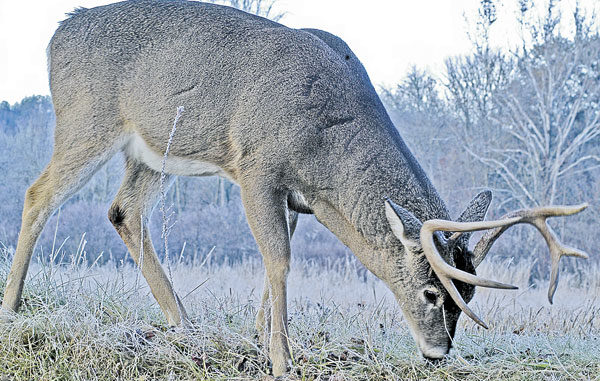
These Graham hunters know the muzzleloader season is perfect for hunting the peak of the Piedmont rut.
Families engage in many types of enjoyable activities, from picnics to vacations to reunions.
The Rich family of Graham does those things, but it also has another passion that draws family members together : deer hunting — and not just any type of deer hunting, but muzzleloader hunting.
The patriarch of the family is Jack Rich, whose better half, Sylvia, partnered with him to operate Buck & Bass Sportsman’s Shop in Graham for 32 years before they retired three years ago. Their sons, Coley and Jay, and Coley’s wife, Lisa, are hard-core, smokepole hunters.
“It’s not so much that we like muzzleloaders, even though they are fun to shoot,” Jack Rich said, “but muzzleloader season in North Carolina always seems to occur during the peak of the rut. If you’re a serious deer hunter and are looking for a chance to shoot a big deer, you have to be in the woods that time of year.”
Actually, the rut is a drawn-out affair, stretching from October through December, but on a bell curve, the rut kicks in about the second week of November across the Piedmont. An early onset of cold weather, some hunters believe, can trigger the mating season a little earlier, but over time, it’s just after Halloween when bucks start roaming the woods, looking for female partners.
Like most hunters, the Riches prepare early for the muzzleloader season, which is the first firearm season of the year in each of the state’s wildlife zones. The annual week-long smokepole season began Oct. 5 in the western third of the state and Oct. 10 in the east, and it begins Nov. 7 in the central zone, and Nov. 14 in the northwestern region.
The N.C. Wildlife Resources Commission tried to add an additional week to muzzleloader season by taking the last week of archery season, but the proposal was held up by protests to the Legislature’s Rules Review Committee.
Jack Rich’s age, 71, prevents him from doing a lot of traditional scouting these days. Coley, a major for the Alamance County Sheriff’s Department, and Lisa, who works for the Burlington Police Department as a telecommunications specialist, don’t scout as much as they did in previous years because of job responsibilities.
But the family has access to several parcels of land scattered around Alamance and Orange counties where they plant food plots to attract deer. Sturdy, metal stands overlook several of the plots, offering good views of large amounts of terrain. Not only that, Alamance and Orange have extremely healthy numbers of whitetails. Alamance County hunters registered 2,531 deer in 2008, while Orange County hunters downed 2,176.
“We plant our plots in September, usually wheat,” Jack Rich said.
“But we start working on our food plots in the summer,” Coley Rich said. “We sweat to get them ready. Of course, the food plots are gone by November and muzzleloader season, but we hopefully have got deer used to coming to them.”
“We do supplement the plots with corn,” said Jack Rich. “When the food plots give out, you have to have something there to attract deer. Next year, we’ll put in a winter food plot, probably oats or maybe clover.”
Jack Rich said they try to select food-plot sites near agricultural fields, but in places that are hidden from casual observers. A hunting lease may get visits from people other than those that have the leased rights.
“We try to put feed patches in the corners and edges of fields that aren’t easily seen by somebody who might walk up to one end of the field or drive through on a 4-wheeler,” Rich said. “We’ll plant ’em, for instance, on the low side of a field that’s got a hump in the middle or is hilly. That way, just not anyone who happens by can see deer standing in our patches.”
Two other factors are important for not only muzzleloader hunters, but any hunters: shooting practice and equipment.
“I never go (any type of) hunting without practicing a lot,” Rich said. “I practice so much I have a lot of confidence, and I’ve tried to instill that in Coley and Jay.
“I always think I’m going to make the shot, and I never think negatively.”
Before the season, the Riches take 12 to 15 shots each with their scoped muzzleloaders from a bench rest to make sure their guns are on target. They don’t scrimp on equipment, using expensive, but effective, weapons.
Rich owns a Thompson-Center Pro Hunter with a Nikon Omega scope that includes a bullet-drop compensator. Lisa Rich uses a Winchester 50-caliber muzzleloader with a Buckmaster scope given to her by her husband, who has a newer model.
“We zero the guns in at 100 yards, then out to 150, 200, 225 and 250 yards,” Jack Rich said. “I have a range-finder, so if I’ve got a good rest, and of it’s a deer I want to take, I feel confident I can do the job at any of those distances. But most of our shots are probably 100 yards and less.”
Rich pointed out the fallacy of a commonly-held belief that the rut, or deer mating season, is the best time to hunt a buck. It’s not.
“The best time to hunt a specific buck is after the second or third week of September in the Piedmont,” he said. “Up until then, you’ll see sometimes three or four bachelor bucks staying together. But they start to break up about then. The rut can be a good thing, but it breaks up patterns (of buck deer) you’re used to seeing. It can work for or against you.”
Deer, especially big bucks, are normally nocturnal, secretive animals. Think about the last time you saw a really trophy-size buck walking about during daylight hours. It doesn’t happen much.
But during the rut, bucks throw caution to the wind, driven by an internal urge to procreate. Bucks walk the landscape 24/7, looking for receptive does. That increases the chances a hunter will see a buck with a rocking-chair set of headgear that would normally be hidden in a thicket or cutover and only reveal itself at night.
Rich isn’t convinced doe-scent lures are always effective at enticing bucks; he knows that some may spook deer. Rare is the hunter who hasn’t had does become instantly alert and leave an area, emitting warning snorts, when they detect the odor of something unusual such as deer lure.
So the Riches, logically, go the other way.
“We hunt does, and that means food sources,” Jack Rich said. “The bucks are going to be looking for does, so if you have food plots to draw in does, bucks will follow.”
The key is to be out there when the does appear.
“During the rut, bucks may show up at dawn, run across the middle of a field in the middle of the day or (appear) at dark,” he said. “The hard thing is keeping your concentration because during the rut, a buck can pop up anytime, and you might not have but a second or two to decide to take a shot.”
Jack Rich said that some does are bred early as September by bucks, “but because so many bucks are killed the first two weeks of November, that’s when the most of (the rut) happens. So that’s when you want to be in the woods or at a good field.”
One key to hunting fields is not only the agricultural crops, but the surrounding terrain.
“The places we hunt have a lot of good cover nearby for bedding areas,” Rich said. “The ideal setup near a field or food plot would be a pine thicket for bedding on the east or north sides of a soybean field and hardwoods on the west and southern sides.”
Rich said his family places its stands in March and adds corn feeders right after turkey season ends.

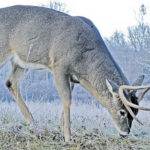
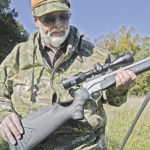
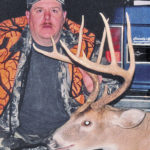
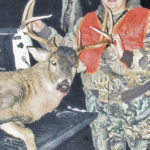



Be the first to comment